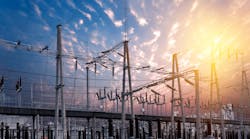The Role of Distribution Automation in the Energy Transition
The Energy Transition is a broad term that encompasses macrotrends in how energy is produced and distributed, and the rate at which it is consumed and by whom. It is one of several pathways to greenhouse gas reduction. There are several drivers of the energy transition including renewables integration, electrification, digitalization and cybersecurity. Distribution automation (DA) is a family of technologies, including sensors, processors, controllers, information and communication networks, switches, and software systems that can help utilities manage the energy transition. The National Electrical Manufacturers Association (NEMA) recently published a white paper on the role of DA technologies in the energy transition.
About Distribution Automation
Distribution automation (DA) technologies help utilities collect, automate, analyze, and optimize data to improve the operational efficiency of its distribution power system. Examples of DA include:
- Distribution Optimization
o Integrated Volt/VAR Control Systems and Components
o Fault Location/Isolation/Service Restoration Control Systems and Components
o Distribution Substation Automation
o Distribution Management Systems (SCADA Systems for Distribution)
o Protective Relays
o Monitor and Control Systems for Distributed Generation, Demand Response, Energy Storage, and Microgrids
- Asset Optimization
o Transformer Monitoring Systems and Components
o Breaker Monitoring Systems and Components
- Demand Optimization
o Utility Demand Response Systems
- Test Equipment and Systems for Product Certification and Conformity Acceptance for the systems and components listed above
- Utility information and communication technology networks including field and wide area networks
What can Distribution Automation do for the Utility Business in the Energy Transition?
The Energy Transition will require continued investment in electric grid infrastructure. Distribution automation solutions help make electric utility infrastructure smarter, more dynamic, resilient and secure. In addition to the benefits above, DA can offer a number of business operations advantages to utilities.
Integration of DA technologies requires minimal lineman training. Linemen and other personnel shouldn’t need to be become experts to safely do their jobs.Manufacturers provide safe switching options for events and additional restraints can be added so the system works within existing safe working practices.- Allows for utilities to monitor transformer loading and to determine how much additional load they can pick up in response to grid events, avoiding harm to costly assets.
- Easy device integration eliminates the need for additional hardware. Utilities can leverage existing field devices and communication equipment from many switching device manufacturers. Vendor solutions allow utility systems to evolve as new devices emerge on the market.
- Reduced communications burden during implementation through open communication protocols. DA equipment can operate on a variety of industry standards and proprietary protocols across diverse physical media and networks.
- Capable of integrating with distributed energy resources (DER) and can account for bi-directional current flow introduced by DERs.
- Simple configuration model allows for scalability from small pilot projects to system roll outs featuring hundreds of devices controlled by a single server.
- DA systems can offer event feedback summaries that allow anyone to review and conduct root cause analysis to help with continuous improvement programs. It is vital that utilities are able to fully understand the events that occur across their networks in order to continually improve the quality of their service. DA software has detailed event logging that can easily investigate and audit the events that occur across entire service area from one centralized location, which mitigates the need for staff to expend valuable time and labor during field investigations.
- To support efficient training and operation, utilities have created a hands-on training facility that simulates real-time grid conditions and demonstrates how its employees can utilize manufacturer software to quickly identify isolated circuits in the event of an outage, pinpoint the outage cause and optimize recovery processes.
- Complete system ownership which is easy to use and understand so utilities can maintain and confidently grow automation as needed without imbedded vendor personnel.
Call to Action
A concerted effort is needed from utilities, state policymakers, and public utility commissions and manufacturers to drive the investment and deployment of DA technologies. Updated distributed automation assets are needed because the electricity delivery landscape is changing. Utilities have traditionally relied on SCADA (supervisory control and data acquisition) systems to enable remote monitoring of generation and transmission systems. Until recently, utilities had limited visibility into the thousands of miles of distribution power lines that serve their customers, relying on customer notifications to learn about power disruptions on their systems. Now, with smart sensor technologies, communications, and data acquisition, they are able to bring a higher level of monitoring and control to power distribution assets, beyond the substation. The role of DA will be further expanded in the energy transition and play an important role in a successful transformation.
The full version of a white paper on DA in the energy transition is available on NEMA’s website.


